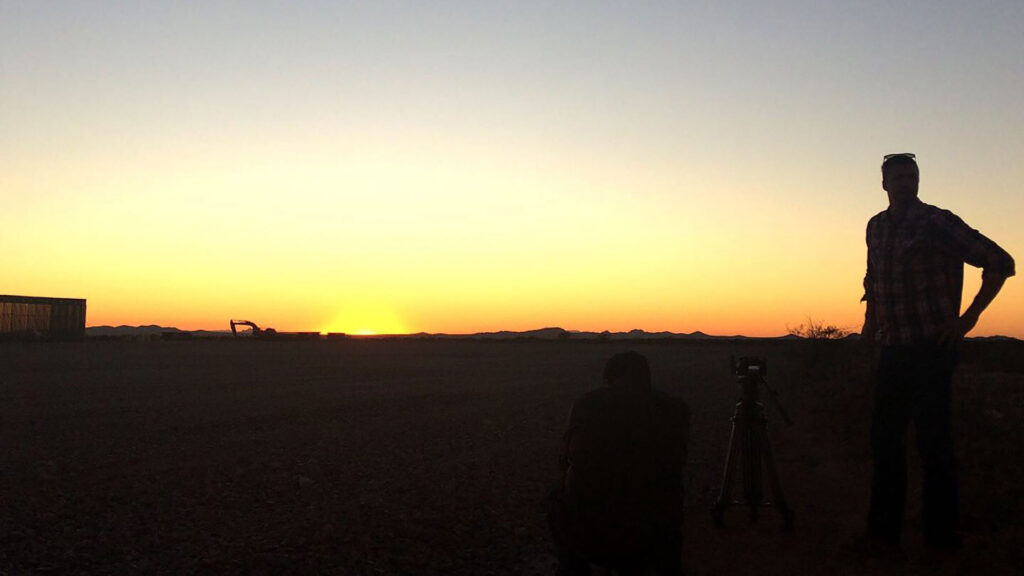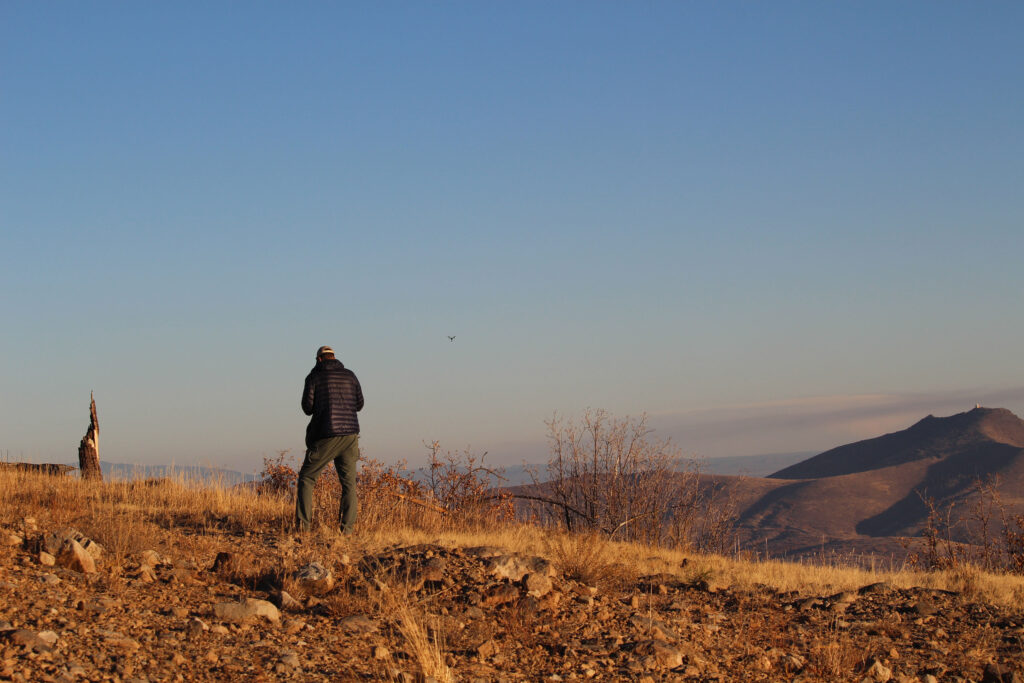End of an Era

More than seven years ago, I worked on my first episode of Our Land. I’d never reported for television and was used to showing up with a pen and notebook and chatting with sources for hours at a time.
For the NMPBS crew, that first day working with me was probably a nightmare.
I’d lined up three interviews in three different places with drives between each one. Meanwhile, there were cameras, lights, and entire protocols I knew nothing about — including how to turn an entire day’s worth of filming three people into a five-minute show. (Though, in the saga of that day, one source declined to be interviewed, so it ended up being slightly easier to make those cuts…)
I recall a few things about that day: Looking across the 2011 Las Conchas burn scar, being stricken to be on camera, and the patience and professionalism of NMPBS’s Antony Lostetter — who just recently resigned from the station.
Over eight seasons, Antony and I worked together on more than 200 projects as part of Our Land. If you’ve ever admired drone footage in a field package, or not noticed a seamless transition, or wondered how someone got the shot, there’s a strong chance it was Antony’s work. If you understand PFAS a little better than you did in the past, it might be thanks to his editing and animations for our project back in 2020, including “What Are PFAS?” and “Why Care About PFAS Contamination” and two other videos about contamination at Holloman Air Force Base and Cannon Air Force Base. And if you’ve ever been on a shoot or in the studio with us, he helped you feel and look your best.

Together, we filmed across the state (in every kind of weather and through a pandemic), agonized over how to make complicated stories make sense to the audience, and grappled with changes in our industry and in people’s attention spans.
Over the years, he also became my partner and best friend — someone I could always trust to make the shot work and sometimes, tell me I was asking for the impossible (which he always made work anyway). With only a few exceptions over the past eight seasons, Antony edited each of the field packages so many of you have loved. To note just a few favorites: Project Feed the Hood (2018), Future of the Gila River (2019), Wildlife and the Border Wall (2019), Art Schaap’s Dairy Dilemma (2021), Listening to the Gila River (2023), and this year’s documentary, Ancestral Connections.
At the same time he was shooting and editing episodes of Our Land, he also worked on other station initiatives and shows, including countless episodes of New Mexico in Focus and ¡COLORES! Starting at NMPBS as a student almost 20 years ago, he’s learned how to do pretty much everything around here, has worked with generations of UNM students, and has troubleshot and jury-rigged any problem that came along.
Goodbyes are never easy around here. Especially this one. But I can’t wait to see what Antony does next, and I’m grateful for all the work we’ve done together, and for all the ways his hard work has made a difference.
P.S. If a friend forwarded you this message, sign up here to receive the newsletter yourself. You can also read recent newsletters online. And if you miss us throughout the week, follow Our Land on Instagram.


